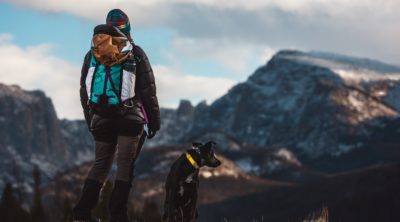
Both, the Scottish Deerhound and the Irish Wolfhound belong to the hound family―sighthounds to be more specific. Even though these two dog breeds are quite different from one another in terms of origin, temperament, and physical characteristics, they do have a lot in common. DogAppy compares the Scottish Deerhound and the Irish Wolfhound, enlisting peculiar differences as well as similarities between the two.
Did You Know?
The Irish Wolfhound is the national animal of Ireland, whereas, the Scottish Deerhound is affectionately referred to as the Royal dog of Scotland.
What do they have in common? A lot actually. Both dogs are excellent sighthounds, and can track game solely by their sharp eyesight. Both breeds are very old, and trace their origins to somewhere between 7th century BC to 1st century AD. Their sharp-sightedness and the ‘hound’ in their names make these dogs swift and very active, especially with humans around.
Both these dogs were used by our ancestors to trail and hunt game. However, the game differed in both breeds; Irish Wolfhounds were specially trained to track and hunt wolves, whereas, Deerhounds, as their name suggests, specialized in hunting red deer. Both breeds are very easily trained, and require a lot of exercise every day.
Now that we’re done with the similarities, let’s highlight the differences in both breeds.
Scottish Deerhound Vs. Irish Wolfhound
Irish Wolfhound
Comparison Chart
- Name: Irish Wolfhound
- Origin: Ireland
- Life Span: 6-8 years
- Height: 33-35 inches
- Weight: 115-180 lb
- Colors: Gray, brindle, red, white, wheaten, fawn
- Behavior: Intelligent, introvert, docile, loyal
Appearance & Temperament
Irish Wolfhounds are quite friendly, though a bit introverted and reserved. They are considered as the tallest breed in dogs, beating even the Great Dane, and have a noble appearance under their shaggy coats. These hounds rely on their sight rather than scent while hunting, and therefore have long necks with their head held high, enabling them to visualize better.
They are great family dogs, and eventually develop a deep bond with their owner. They aren’t really guard dogs when it comes to guarding the house, but they would definitely protect the owner and his/her family in times of danger. They are very gentle with children, though children might be a bit fearful of them due to their huge size. These dogs need early socializing; early exposure to new people, sounds, sights, and experiences would help them adapt better when they become adults.
Health
An Irish Wolfhound is a very energetic and active dog breed, and requires a lot of exercise (at least 40 minutes daily). Always use a leash when taking the wolfhound out for a stroll, as a measure to prevent it from chasing other animals and moving objects.
Although a very healthy dog otherwise, Irish Wolfhounds are prone to several diseases, like hip dysplasia, elbow dysplasia, liver shunt, progressive retinal atrophy, gastric dilatation-volvulus, osteosarcoma, etc. Regular visits (quarterly) to the vet are essential to maintain proper health of this dog.
Scottish Deerhound
Comparison Chart
- Name: Scottish Deerhound
- Origin: Scotland
- Life Span: 8-11 years
- Height: 30-32 inches
- Weight: 75-110 lb
- Colors: Blue, brindle, red, yellow, gray, fawn
- Behavior: Friendly, gentle, intelligent, loyal
Appearance & Temperament
An extremely friendly dog, the Scottish Deerhound makes a very loyal and devoted companion. These dogs have a wire-haired coat, and a very gentle and dignified look. Belonging to the hound family, they are prone to chasing moving things or animals, hence, should be leashed when taken out for a stroll. Having a large fenced yard is something this dog would love, and would also meet its exercise needs.
Scottish Deerhounds are extremely good runners. That’s the reason they can chase an animal as swift as a deer. Early house-training and socialization is a must in order to reduce its chasing instinct and make it more disciplined. If properly socialized, these dogs befriend almost everyone, including other animals, unless they do not stimulate its prey drive. The dog isn’t really recommended for an apartment setup, unless you have a very large one with a lot of room it to run around.
Health
These dogs are very good jogging or running companions. Take it for your morning jog or play fetch with it; it’s going to enjoy any type of physical activity. Occasionally, you could even do long or very long runs with it. That would help keep the dog, and even you in good shape.
Unfortunately, they are prone to several diseases, like dilated cardiomyopathy, gastric torsion, hypothyroidism, cystinuria, etc. However, frequent visits (every three-four months) to the vet would prove beneficial to maintain its health.
Both these breeds are very loving and make great pets. If you’re looking forward to adopt any of the two, we hope that we helped to make your decision easier.




